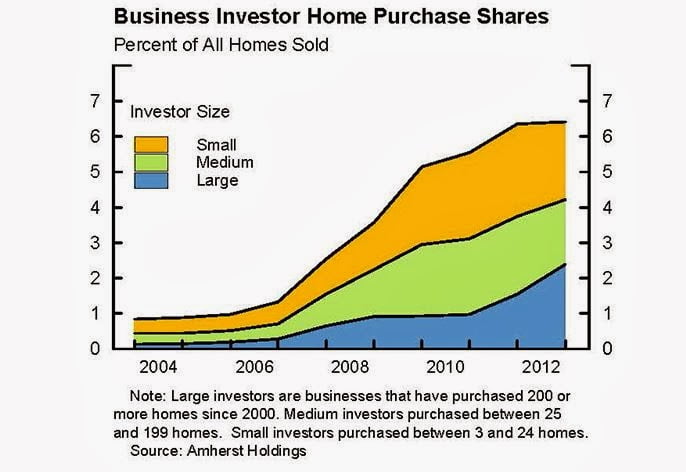A curious contradiction has persisted in the real estate market for the past several years: California’s homeownership rate has crashed while prices have soared. What’s going on here?
first tuesday was among the first to note this incongruity. We’ve been critiquing its cause since early 2012 and now most real estate analysts agree: speculators are the culprits. Speculators come in many forms and are protean in nature — they change shape as the market necessitates (or in herd-like response to the activities of their fellow speculators).
While we were primarily concerned with “flippers” during the frenzied momentum of the Millennium Boom, we are now more attuned to the so-called “investors.” The term isn’t chosen by whim, as the two entities are indeed distinct. In fact, a recent report out from the Federal Reserve provides profound insight as to why the discussion has shifted from flippers (short-term, buy-to-sell) to investors (long-term, buy-to-let) in this post-recessionary period.
The fact is, “institutional” or “business” investors are more prevalent in today’s market than they have ever been. Business investor single family residence (SFR) purchases totaled over 950,000 in the U.S. between 2010 and 2013, comprising nearly 7% of all sales nationally by 2013. That is more than double the amount purchased by business investors during the previous six years, from 2004 to 2010.
Keep in mind, institutional investor purchases are easy to identify — the transaction documents contain the corporation name. Individual and independent investors are much more difficult to track. Their presence in the market can only be gleaned by deduction: increased cash sales, falling homeownership and rapidly rising prices means the flipper is also afoot. In fact, absentee homebuyers still hover between 20% and 30% of all sales in California’s metro regions.
While flippers are still playing the old game of buying low and (hopefully) selling high, the monumental increase in large, institutional investors signifies a paradigm shift in the SFR investment strategy. According to the Fed’s report,
“. . . the largest investors have also invested significantly in building new platforms for the management, marketing, and servicing of their rental properties. Thus, a major aspect of their strategy is to combine scale economies with information technology to “professionalize” the rental market for single-family homes.”
Thus the large investor business strategy is to eventually sell off their entire SFR portfolios, along with the management infrastructure, to companies interested in maintaining them as rental properties. This is opposed to a one-by-one sales strategy, which would almost certainly produce a loss given the current market outlook. While divining the precise moment this will happen is difficult, it’s safe to say expectations regarding the price-to-rent ratio will determine the decision. Rents need to be strong enough to attract a high price for the portfolio. This will occur at different rates in different metro regions throughout California and the country.
In other words, the big players, the really big players, are not betting on the perpetual upward motion of SFR prices — quite the opposite. Observing the declining homeownership rate, they foresee a continuous stream of SFR rental demand. They understand we are in a period of secular stagnation and they are shaping their business strategy accordingly. Are you?
Chart courtesy of the Federal Reserve



















